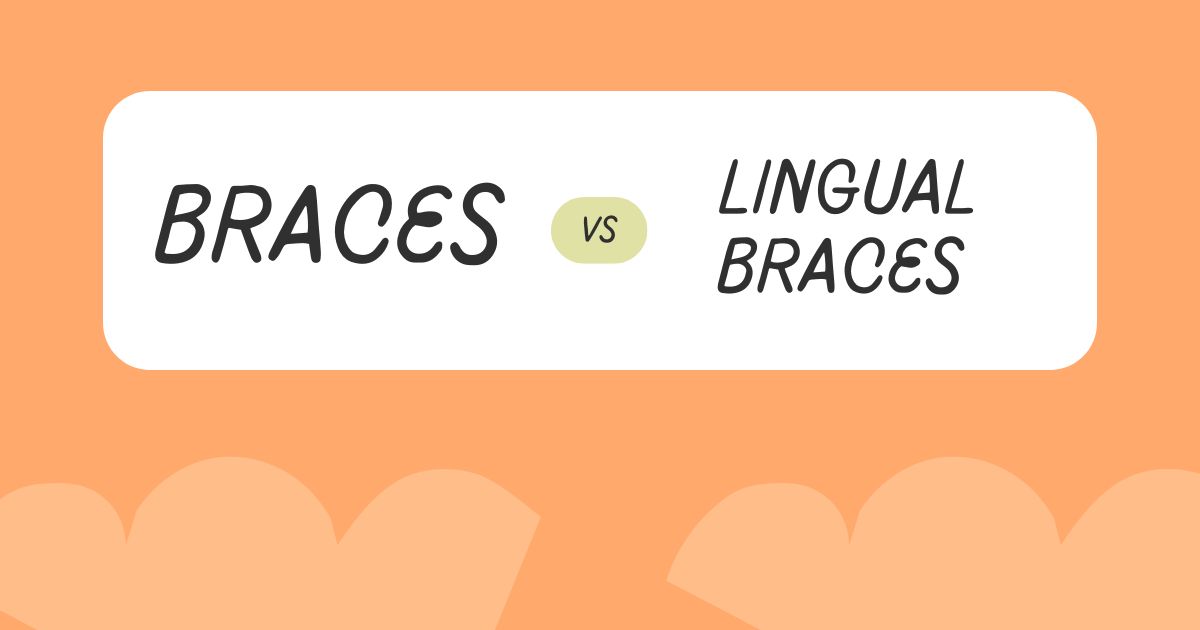When it comes to straightening your teeth and achieving a confident smile, modern orthodontics offers multiple options. Two of the most common treatments are traditional braces and lingual braces. While both aim to correct dental issues like crooked teeth, gaps, and bite misalignment, they differ significantly in terms of appearance, comfort, cost, and effectiveness.
Let’s break down everything you need to know about braces vs lingual braces to help you make an informed decision.
What Are Traditional Braces?
Traditional braces use metal or ceramic brackets attached to the front of your teeth. These brackets are connected by wires and elastics that gradually move the teeth into place. Today’s versions are more lightweight and less bulky than older models, and you can even choose colored bands to personalize your look.
What Are Lingual Braces?
Lingual braces work similarly to traditional ones but with a unique twist—they’re attached to the back (tongue side) of your teeth, making them virtually invisible from the front. They are custom-made for each patient, ensuring a snug and precise fit.
Appearance: Visible vs Hidden
One of the biggest reasons people consider lingual braces is their discreet look. Because they’re hidden behind the teeth, they’re ideal for adults or professionals who are self-conscious about their appearance during treatment. Traditional braces, while more visible, have come a long way with less noticeable options like ceramic brackets.
Winner: Lingual Braces (if invisibility is your top priority)
Comfort and Speech
Traditional braces may cause discomfort due to brackets rubbing against the cheeks or lips, especially when newly adjusted. Lingual braces, on the other hand, can irritate the tongue and temporarily affect speech, particularly during the first few weeks.
✅Winner: Traditional Braces (easier to adjust to and generally more comfortable)
Customization and Complexity
Lingual braces require more customization. Each bracket must be carefully designed to fit the shape of the back of your teeth. This is great for precision but can make the fitting and adjustment process more complex and time-consuming.
✅ Winner: It depends – Lingual braces are more tailored but traditional braces are easier to manage.
Treatment Time
Both braces and lingual braces offer similar treatment timelines, typically between 18 months to 3 years, depending on the severity of your dental issues. However, because lingual braces are more difficult for orthodontists to adjust, appointments might take longer.
✅ Winner: Tie (similar overall duration, but traditional braces may involve faster adjustments)
Effectiveness
Both types are highly effective in treating a wide range of orthodontic problems. However, traditional braces may be better for complex cases, while lingual braces work well for mild to moderate corrections.
✅ Winner: Traditional Braces (slightly more versatile in complex treatments)
cost Comparison
Lingual braces are often more expensive than traditional braces due to their customization, stallation complexity, and longer chair time. On average:
Traditional Braces: $3,000–$7,000
Lingual Braces: $8,000–$13,000
✅ Winner: Traditional Braces (more budget-friendly)
Maintenance and Oral Hygiene
Both require a strict dental hygiene routine to avoid plaque buildup, cavities, and gum issues. Lingual braces can be harder to clean due to their position behind the teeth.
✅ Winner: Traditional Braces (easier to brush and floss around)
Pros and Cons Summary
Traditional Braces
Pros:
Effective for all cases
Easier to clean and adjust
Lower cost
Cons:
Highly visible
May cause mouth irritation
Lingual Braces
Pros:
Completely hidden from view
Customized for comfort
Great for adults and professionals
Cons:
Higher cost
Speech issues and tongue discomfort
Harder to clean and adjust
Who Should Choose Which?
Choose Traditional Braces if:
You don’t mind them being visible.
You have a tight budget.
You have a complex dental issue that needs heavy correction.
Choose Lingual Braces if:
You want a discreet, invisible treatment.
You are comfortable with a higher cost.
Your dental issues are mild to moderate.
Final Verdict
When it comes to braces vs lingual braces, both offer reliable ways to achieve a straight smile. The right choice ultimately depends on your lifestyle, budget, and comfort preferences. If invisibility is non-negotiable, lingual braces may be worth the investment. If cost, comfort, and easier care matter more, traditional braces are a solid choice.
FAQs
Are lingual braces painful?
A: They can cause more tongue irritation at first, but most people adjust within a few weeks.
Can kids get lingual braces?
A: While possible, traditional braces are usually preferred for children due to cost and easier maintenance.
How long do I need to wear braces?
A: Both types typically require 1.5 to 3 years, depending on your condition.
Are lingual braces really invisible?
A: Yes, they are hidden behind the teeth and not visible when you smile or talk.
Do insurance plans cover lingual braces?
A: Many plans cover a portion of orthodontic care, but you should check if lingual braces are included.











